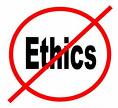There are over 7,393 mutual funds and about 3,500 ETFs listed in the U.S., and virtually all charge fees to shareholders to help offset their operating expenses. This is considered an average cost of doing business.
Thanks to competition from ETFs and pressure from investors seeking lower fees and expenses, the average annual mutual fund fee has been reduced by more than half in the past two decades, to 0.36% in 2023 from 0.87% in 2004.
According to Morningstar data, ETFs have an average annual management fee of 0.51%, which is about half the 1.01% fee of the average mutual fund.
However, the mutual fund industry considers itself unique. Over the years, it has lobbied securities regulators for exceptional treatment, especially in offsetting its extensive mutual fund marketing and sales expenses by charging these costs off to shareholders. The vehicle for this relief comes in fees, which fall under the esoteric name of SEC Rule 12b-1, which governs the fees paid to mutual fund dealers as compensation for selling a fund company’s products.
The 12b-1 fee is considered an operational expense and is included in a fund’s expense ratio. It is generally between 0.25% and 0.75% (the maximum allowed by law) of a fund’s net assets.
President-elect Donald Trump, however, is no friend of regulation, especially that from the Securities and Exchange Commission (SEC). The SEC enacts regulations and enforces penalties against bad financial institutions—banks, crypto scammers, investment firms, and various other money fraudsters—and can levy big fines and prison sentences. Trump and his regime do not like this situation.
As a result, one of his significant appointments will be to choose a loyalist who opposes regulation, especially those that affect the 162 million American retail investors. Most of these investors are not sophisticated and susceptible to outlandish sales pitches and promises of great fortunes.

The profitable 12-b1 fees were introduced as part of the Securities and Exchange Commission (SEC) 1940 Act. According to a paper from SEC financial economist Lori Walsh, “the original justification for the plans, as put forth by the mutual fund industry in the 1970s, was that such (12b-1) fees help attract new shareholders into funds through advertising and by providing incentives for brokers to market the fund.”
As the number of shareholders increased, fund expenses would be reduced by passing along any scale of the economy generated from providing many of the same services to a larger body of shareholders. But that was essentially theory.
In practice, there are many instances when 12b-1 fees pit shareholder interests against those of load fund companies. SEC economist Walsh’s study found that “while funds with 12b-1 plans grow faster than funds without them, shareholders are not obtaining benefits in the form of lower average expenses or lower flow volatility. Fund shareholders pay the costs to grow the fund, while the fund adviser is the primary beneficiary of the fund’s growth.”
This inherent conflict of interest places load mutual fund companies on a collision course with their shareholders. Today, the way 12b-1 fees are being used raises serious questions about the fiduciary role of load mutual fund companies and their sales intermediaries.
Too many fund companies misuse 12b-1 and other poorly disclosed fee arrangements, such as shelf space deals and revenue sharing agreements, which are legal yet have created severe ethical problems. These conflicts should justifiably raise the issue of whether shareholders can trust the hidden motives and judgment of the financial rep who sold them the mutual fund in the first place and the fund company that pays for these practices.
12b-1: A Very Controversial Fee
These fees have always been controversial and debated at the highest levels of the mutual fund industry. The reason: they determine how billions of dollars of shareholder money is spent at load mutual fund companies on fund administration, sales/marketing expenses, salaries for portfolio managers, and something which is not publicly discussed, how millions in ancillary costs are wasted on sales junkets, national wholesaler networks, excessive salaries, and trinkets for financial reps which range from golf balls, barbeque sets, wine, paperweights, key chains, clothing, umbrellas, to dinners, wine tastings, and “value-added events.”
The 12b-1 fee also points out the wide gap in fiduciary responsibility under ERISA plans and the weak fiduciary role between a financial representative and their investor client. Under ERISA, for example, a pension plan trustee or executive diverting plan participant money to pay for personal expenses triggered severe repercussions, which could go as high as the U.S. Department of Labor or Justice Department.
I saw this first-hand during the mid-1970s when I worked at the notorious Teamster’s Central States Pension Fund in Chicago, which was under DOL trusteeship at the time. At the time, the Central States Fund was the largest Taft-Hartley pension fund in the U.S., with $1.5 billion in assets (How times have changed.)
In one instance at the Teamsters Fund, some trustees attended a board meeting in California and went to the pro golf shop where they bought golf supplies and charged it to their rooms. The room expenses were reimbursed with pension fund assets, which triggered an ERISA violation: diverting pension plan assets for personal use. The DOL then made sure the Fund was reimbursed and the trustees reprimanded.
Yet, when I worked for a mutual fund company, a conference event planner said she reluctantly had to sign an expense account for a mutual fund wholesaler who bought $2,000 worth of wine and delivered it to his room for personal use. This same violation would be impermissible and punished under ERISA standards, yet it went unpunished by the mutual fund company.
The wine was paid for using 12b-1 fees. Shareholders did not get to sample this wine; they just paid the bill. This double standard between ERISA fiduciary standards versus laissez-faire load mutual fund company spending raises the critical question: Who advocates for the mutual fund company shareholders?
Even worse, what happens when 12b-1 fees are used against shareholders, whether they keep fund expense ratios high as fund assets grow or the blatant abuse of fund spending on frivolous items?
The Role of 12b-1 Fees and Wholesalers
In a June 2007 SEC-sponsored public roundtable on 12b-1 fees, panelists discussed the history, role of these fees in fund distribution, costs and benefits, and options for reforming this set of fees. An interesting memo issued by the law firm of Willkie Far and Gallagher summarizes this discussion.
The memo correctly notes that 12b-1 fees are charged to some degree by fund companies, including no-load funds, as a means of compensating intermediaries for selling their funds, shareholder communications, and other administrative costs. If a fund charges a small 12b-1 fee and works to keep expenses low, it can call itself a no-load fund. This category of fund company usually adopts the direct sales model in which investors buy directly from the company.
In contrast, load fund companies often sell their funds using a national sales force of wholesalers supported by internal sales support staff and a marketing department that produces materials for shareholder and broker-dealer use.
From my experience, the load-fund sales model has an entirely different focus from the direct sales (no-load) model. At load funds, the company’s national wholesaler sales force is the most critical audience, followed by the financial intermediaries (brokers and financial reps), which directly interface with shareholders.
Despite much of the load fund industry rhetoric, the least essential audience is individual shareholders. I estimate these two groups (wholesalers and financial intermediaries) receive about 90% of the marketing department’s attention, while individual shareholders receive 10%. (From a budget perspective, these proportions differ since a national wholesaler and internal sales support staff could number around 250 people, while there may be hundreds of thousands of individual shareholders.)
And what do wholesalers do? In the words of an industry publication, “wholesalers spend their lives attending conferences for financial advisers, taking advisers out to swank restaurants, crisscrossing the country to give presentations to advisory firms or to help an adviser give a seminar on investing to prospects.” The problem is that the majority of these presentations are fund-specific. Most wholesalers are not CFAs, and most will not or cannot discuss other strategies and products, such as ETFs or no-load funds, which are often better suited to client needs.
Yet despite the narrow focus of mutual fund wholesalers, they are exceptionally well compensated. According to a January 2006 report from the mutual fund research firm Kasina, total external wholesaler compensation can range from $225,000 for an average-performing wholesaler to over $500,000 annually for top performers.
A salary comparison from the firm Saleslogix found that mutual fund wholesalers are among the most highly paid professionals in the nation, ranking as high as doctors and lawyers. However, even this salary figure understates the remuneration since 100% of any mutual fund wholesalers’ expenses are reimbursable by their mutual fund company employer. This includes all meals, gasoline, travel, office, auto, and telecommunications expenses.
One fund wholesaler was so inconvenienced from putting in his car expense reports that he leased one and had the fund company pick up the entire tab instead. Unlike doctors and lawyers, mutual fund wholesalers do not pay for expensive malpractice or professional indemnity insurance. The money to pay for these salaries and expenses comes from 12b-1 fees, which, you guessed it, all come from the shareholders.
What’s Ahead?
At the time of the SEC conference on 12b-1 fees held in June 2007, then-Chairman Christopher Cox said the Commission would act on 12b-1 rules later in 2007. Nothing significant happened. At a conference in April 2009, I asked SEC Chairwoman Mary Shapiro about 12b-1 fees, and she again repeated that they were high on the SEC’s agenda and that some action would be taken in the second half of 2009. This will be a high-level debate, but if the past serves as any example, individual shareholders’ interests will not be represented.
This is because Wall Street reform is inherently evolutionary. Given the powerful lobbying from the Investment Company Institute, the Profit-Sharing Council of America, and various law firms representing individual load fund company clients, this debate could easily result in actions that will reduce shareholder returns in direct proportion to a load fund company’s high expense ratios.
In practice, this means that it will take shareholders years longer to recoup their market losses since they will have to first pay for the expenses of their load fund company before they see any return posted to their personal fund accounts.
To add insult to injury, after the shareholder pays the 12b-1 fees and the wholesalers bring in new investors regardless of the costs, the fund company often does not pass along any scale of the economy they achieved from adding more shareholders to their existing service model. This was the main reason for charging the fees in the first place, yet these scales of the economy are often never passed along to reduce overall fund expenses.
Since the 12b-1 issue is so esoteric and involves billions of dollars, many shareholders will not even know it is happening. This will be a costly mistake since the current economic imbroglio, which combines the decline in housing wealth and portfolio assets, has effectively wiped out a generation of wealth.
Reducing 12b-1 expenses will benefit shareholders by allowing fund returns to post slightly more significant gains faster as fund expense ratios are reduced. If this occurs, fund companies would have to reshape their business practices to become more competitive and less commoditized. But maybe that is precisely what they are trying to avoid in the first place.











